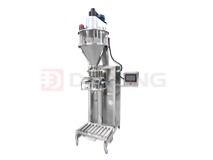The rational design of mining vibrating screens needs to consider the following key factors:
Screening efficiency: Reasonable vibrating screen design can improve screening efficiency, that is, separate ores according to the required particle size. This can be achieved by selecting the appropriate mesh size, appropriate vibration frequency and amplitude.
Strength and stability: The vibrating screen must withstand large vibration and impact forces during work, so the design should take its strength and stability into consideration to ensure that it does not malfunction or be damaged during long-term continuous operation.
Material selection: The components of the vibrating screen should be made of wear-resistant, corrosion-resistant and high-temperature-resistant materials to adapt to the screening of different types of ores.

Operation and maintenance convenience: Reasonable design should take into account the convenience of operation and maintenance, including easy replacement of screens, cleaning and repair, etc.
Noise and environmental impact: The vibrating screen will produce a certain amount of noise and vibration when working. The design should take into account reducing noise and reducing the impact on the surrounding environment to ensure a quiet and comfortable workplace.
In summary, a reasonable design of a mining vibrating screen needs to comprehensively consider multiple factors such as screening efficiency, strength and stability, material selection, ease of operation and maintenance, as well as noise and environmental impact to meet the working requirements of ore screening.





 (Live chat)
(Live chat)


_213x160.jpg)


 +86-15136770681
+86-15136770681 sale@vibratingscreen.cc
sale@vibratingscreen.cc +86-373-3669006
+86-373-3669006 From West Room 5, 1st Floor, Building 18, Huilong Yangguang Mingyuan, New District, Xinxiang, Henan, China (Mainland).
From West Room 5, 1st Floor, Building 18, Huilong Yangguang Mingyuan, New District, Xinxiang, Henan, China (Mainland). Your Position:
Your Position:



